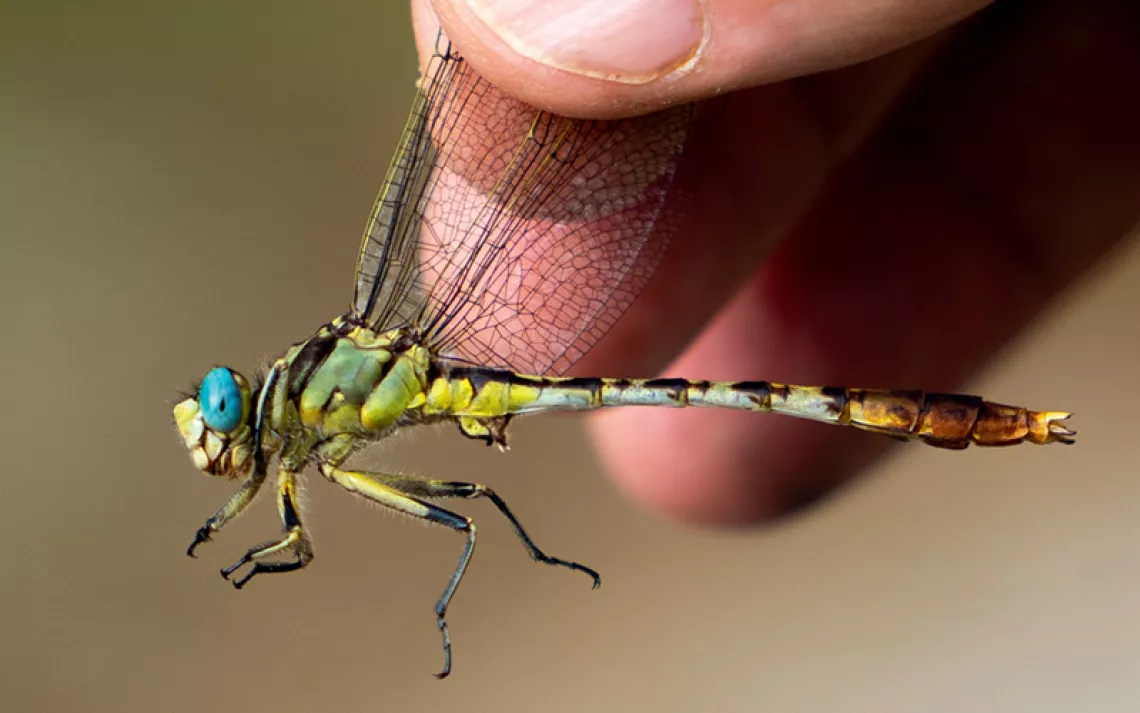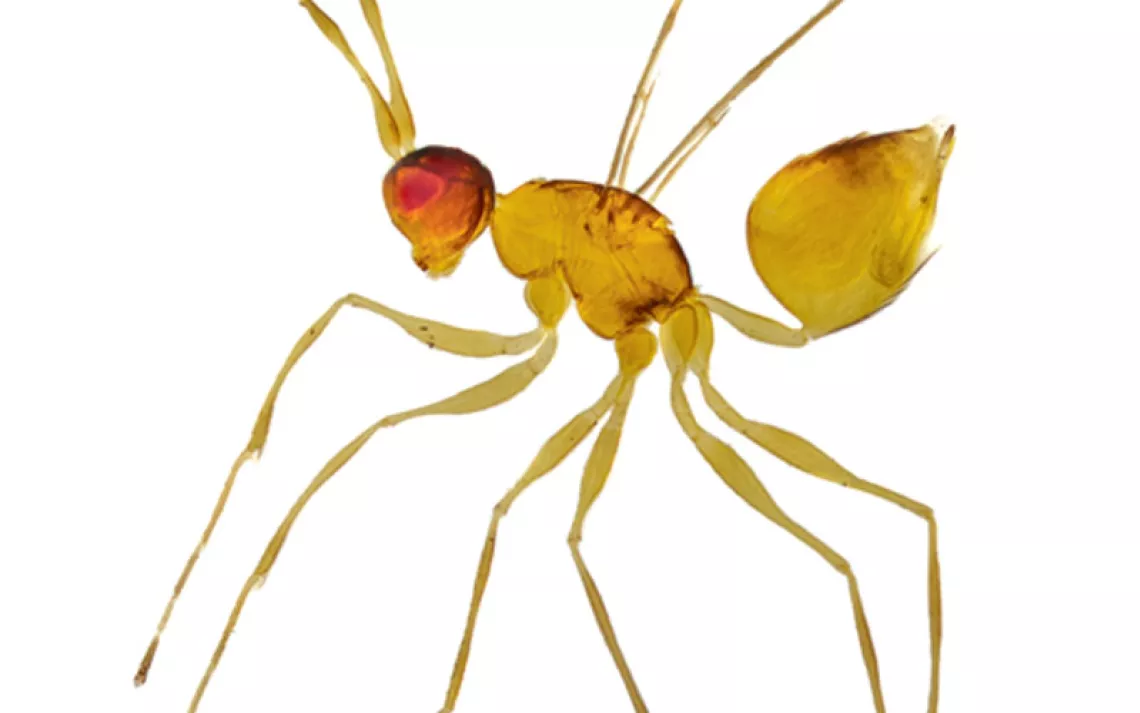Bat-Eating Spider
When echolocation fails

Photo by Yasunori Maezono, Kyoto University, Japan
Here's inspiration for a Halloween nightmare: an adult proboscis bat caught in the web of the orb-weaving spider Argiope savignyi at La Selva Biological Station in Costa Rica. Chiropterophagy—i.e., bat eating--turns out to be more common than anyone suspected, according to a recent paper in the journal PLOS ONE. In it, Martin Nyffeler and Mirjam Knoernschild cite "numerous ... instances where spiders were seen actively attacking, killing, and eating the captured bats."
A variety of species opportunistically prey on bats that get tangled in their webs, but large tropical orb weavers of the genus Nephila, whose strong webs can span five feet, seem to be the most voracious bat-chompers. While echolocation enables bats to avoid most webs, Nephila sometimes spin webs in large aggregations, which can (and do) snare unfortunate bats. One theory holds that these spiders require "the occasional catch of large, energetically rewarding prey" to reproduce. Since a bat would yield 10 times the biomass of a spider's daily diet, chiropterophagy should guarantee a nightmarish new generation.
 The Magazine of The Sierra Club
The Magazine of The Sierra Club



